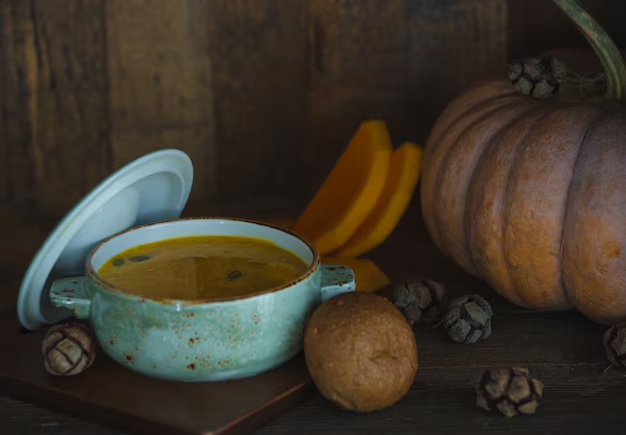The Shelf Life of Homemade Soup: How Long Will It Last in the Fridge?
Few culinary pleasures rival the comfort of homemade soup. Whether it's a hearty chicken noodle, a spicy vegetable broth, or a creamy bisque, homemade soup offers warmth and flavor that’s tough to beat. However, as with any homemade dish, a key consideration is how long it will stay fresh. Proper storage is crucial in ensuring your flavorful creation is safe to enjoy later. Below, we delve into the best practices for storing homemade soup in the refrigerator and explore related topics to empower your culinary endeavors.
🥣 Understanding Soup Storage Basics
Before considering how long soup can be stored, it’s essential to grasp the fundamental principles of food safety concerning soup storage. When cooling down a large pot of hot soup, food safety experts recommend breaking it into smaller portions to encourage even and rapid cooling. This prevents the soup from lingering at a temperature where bacteria thrive, typically between 40°F and 140°F.
Quick Tip: Use shallow containers to refrigerate soup for faster cooling.
🧊 Maximum Storage Time in the Fridge
Generally, homemade soups last well in the refrigerator for up to three to four days. Several factors can influence this duration, including ingredients used, the soup's acidity, and the refrigeration temperature. Soups with high-acid components, like tomatoes, may enjoy a marginally longer shelf life, while those involving dairy or seafood may necessitate cautious monitoring.
When in doubt, inspecting your soup for off-putting odors or textures is prudent. Trust your senses—if something seems off, it’s best to be on the side of caution.
Key Consideration: Mark the date when storing soup to efficiently track storage time.
🐟 Special Considerations for Seafood and Cream-based Soups
Seafood and creamy soups demand extra vigilance due to their sensitive ingredients. Seafood naturally spoils faster, and cream can change consistency and flavor over time.
- Seafood Soups: Aim to consume within one to two days.
- Creamy Soups: These may also benefit from faster consumption to preserve optimal taste and texture, ideally within two to three days.
🌡️ Setting the Right Refrigerator Temperature
Maintaining your refrigerator at 40°F (4°C) or below is crucial for food safety. This environment curtails bacterial growth, ensuring your soup remains fresh longer. Consider purchasing a thermometer dedicated to monitoring your fridge's temperature, particularly if your model lacks a digital display.
🍲 Freezing for Extended Storage
When you intend to store homemade soup for longer than a few days, the freezer becomes your ally. Freezing helps preserve the soup for two to three months, though some soups can last even longer. Opt for freezer-safe, airtight containers or heavy-duty resealable bags to prevent freezer burn. Labeling your packages with dates and soup types will keep your culinary archives organized.
Freezing Tip: Leave an inch of space in containers for expansion when freezing liquids.
📋 Freezing Considerations by Soup Type
- Vegetable Soups: Freeze exceedingly well; ideal for future meals.
- Rice and Pasta-based Soups: Expect some texture changes after freezing; consider leaving these out initially and adding fresh when reheating.
- Cream-based Soups: May separate upon thawing; whisk in fresh cream or milk to restore richness when reheating.
🔥 Reheating Your Stored Soup Safely
Reheating soup involves more than just zapping it in the microwave. The goal should be to return the entire batch to a boiling temperature, around 165°F or higher, to eradicate any potential bacterial growth.
Reheating Techniques:
- Stovetop Reheat: Efficient for larger batches. Stir gently to maintain even heat distribution and prevent scorching.
- Microwave Reheat: Ideal for single servings. Stir halfway through to encourage consistency in temperature.
🗂️ Soup Storage Success: Quick-Reference Guide
Here's a handy, skimmable guide for storing and maximizing the shelf life of your homemade soup:
| Aspect | Timeframe/Action | Important Note |
|---|---|---|
| Refrigerator Time | 3-4 days | Seafood: 1-2 days |
| Freezer Time | 2-3 months | Evaluate texture post-thawing |
| Temperature Set | 40°F (4°C) or below | Use a fridge thermometer |
| Reheat Method | Boil to 165°F | Ensure even reheating |
| Container Choice | Shallow for fridge, airtight for freezer | Leave space for liquid expansion |
| Label Importance | Date & type | Avoid forgetting the broth’s age |
🥡 Useful Tips for Soup Storage
- Store With Flexibility: Manufacturing diverse batches of soup without overly detailed recipes grants storage flexibility. Adjust proportions and ingredients based on what’s currently available.
- Experiment Cautiously: With long-term storage, carefully label and prepare small test portions. Lab-compatible storage ensures you can safely tweak your recipe without risking wastage.
- Batch Cooking as Prep: Go the extra mile preparing diverse sets of vegetable stocks or broths for easy, fresh infusion whenever the craving strikes.
🍅 Guarding Against Common Mistakes
- Procrastinating Cooling: Avoid letting soup sit out for more than 2 hours. Delays put your fresh batch into risky territory.
- Overfilling Containers: Prevent leaks by leaving adequate expansion space when freezing soups.
- Shelf-life Awareness: Documenting the timelines for each batch averts unnecessary spoilage or unfortunate health repercussions.
🌟 A Final Serving of Insight
Exploring the nuances of homemade soup storage unveils the art of balancing flavor preservation with safety. As you stir your next pot, taking these tips to heart will help ensure that every ladle-full offers an uncompromising, fresh taste. Embrace your culinary curiosity confidently, knowing your creations can be as enduring as they are delicious.
